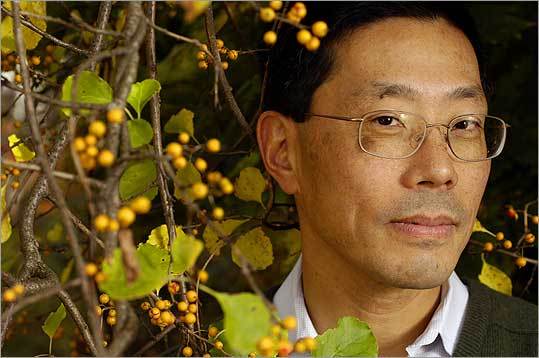 Many have wondered why I haven't posted an interview with EEStor's Dick Weir in quite some time. Well, today, I think I can finally shed some light on that issue. As it turns out, EEStor has been in agreement with having another interview for a long time. However, I have been unwilling to agree with their one condition. But, in light of the fact that so many people want to know what is going on now, I decided to bite the bullet and I agreed to their conditional offer in order to get the interview.
Many have wondered why I haven't posted an interview with EEStor's Dick Weir in quite some time. Well, today, I think I can finally shed some light on that issue. As it turns out, EEStor has been in agreement with having another interview for a long time. However, I have been unwilling to agree with their one condition. But, in light of the fact that so many people want to know what is going on now, I decided to bite the bullet and I agreed to their conditional offer in order to get the interview.In this interview with EEStor founder Dick Weir, I was able to ask any question I wanted. No holds barred. However, the answers provided by Mr. Weir would be---and this is the condition---would be expressed only via a Jamaican dialect.
B: Dick, it's good to be speaking with you again. It's been a long time and this format you've required should probably be addressed from the outside. So, why the Jamaican manner of speaking today?
DW: Dat a mi brudda. Jamaican mon, mi luv a Jamaica, mon. Mi did de day a mi own in Jamaica, mon.
B: I see. Ok. If it's your preference. First question, can you please provide an update on the status of EEStor's commercialization effort?
DW: Da tists a go a home rrreeeun mi brudda. Dis lef nuttin but da prahducks ah rah bots a crunkin Lawd 'ave mercy pan mi bones. Someting a see, mon. Nuh dun yet. Buh di for di tree tousand jooles cc, mon.
[Longish pause]
B: Ahem. Go on.
DW: De nex one mi brudda.
B: Oh, ok. So, when might we hear some sort of announcement from EEStor?
DW: Mi a go bak a wuk pan Chewsday a may pan de Fraday a fe da patans a nite. Nuh di inna buks inna woryd ga dat. Nuh di profs a me fambly. Galang bout mi business inna de bik mi brudda. Aright? Put dis all inna de bag. Inna de bag, mon.
B: That's great news. It must feel really good to be where you are and on the cusp of doing some really important and great things. But, your choice to maintain such a low profile has lead to many vocal critics saying quite a few nasty things such as that you're incompetent and worse, that you've orchestrated everything as part of a scam. What do you say to those skeptics out there who believe this today?
DW: Smaddy tell me sey did a chat bout mi. De bwoy a de biggest liad. Mi wud radda yu nuh chat a mi. Yu see? Dis a skeps tahs uh pan a mango tree, mi brudda. I'm jook mi inna mi yeye. Yu ave an idea.
B: Understood. How is Carl Nelson getting along?
DW: Carl is mi brudda fra ah nudda mudda. Jus lika brudda inna mi haht. No bodda bawl Carl soon cum bak.
B: Tell him we wish him all the best. Moving on now, would you be able to say a few words about your work with Lockheed Martin?
DW: Coodeh, yuh see de big bud eena de sky ah mi Lawd 'ave Mercy. Lockheed mek up thim mind arredy bout de awl of de midda east. Jesum Peeze, a cyan bleve dat wi lose de contree. So dah mista Stevens issa wan big mon. Ya wa see but kept de sinting inna de bag. Butta goooda di questyon, mon.
B: What about Kleiner Perkins, how do they feel these days?
DW: Len out de money an no troubles. Happy like du buds in da tree, mon, smokin de ganga wit mi brudda Carl. But mi brudda carl mak eh mi call dis da "Cannabis" da CAN AAHH BIS. [said slowly and emphatically] De Jon Doerr mak eh Carl call dis de Midical Manywanna a goin green. Oh brudda. [laughing... then a pause as if Weir is taking a drink. A large beer possibly. ]
B: I definitely believe that. And as for your other partner, Zenn Motor Company. Do you have any thoughts on when they might receive their first pre-production unit?
DW: I be tellin a Ian a lang time mi dey inna dis close anna no cigah. Buttta mi askin fa du big jesu a tree days now inna mango tree. Das it. Na bye ti de next time mi rohbatd de callin mi. Bye mon.
[phone hangs up abruptly.]
This interview took place today via phone with Dick Weir at his production facility in Cedar Park, TX









